The very first time I visited London was in the summer of 1982, and the first Beatles location I went to visit, was the famous zebra crossing near Abbey Road studios. It has been an obsession of mine to collect as many photos as I can from this photo session, and I have assembled them all here.
The cover designer of the Abbey Road album was Apple Records' creative director John Kosh, 22. The cover photograph was taken by photographer Iain Macmillan, at John Lennon's suggestion. Macmillan was a freelance photographer and a friend to John Lennon and Yoko Ono. According to Kosh, the assignment came on Monday and the finished cover was supposed to be due Wednesday. So the most imitated and iconic album cover arguably to have been made was a rush job! Iain Macmillan was given only ten minutes on Friday, August 8, 1969 around 11:30 that morning to take the photo on the zebra crossing on Abbey Road.
According to Macmillan's printer, Richard Heath, Iain later remembered it as being a Sunday. Still, Mal Evans' diary, as well as the memories of the fan girls who used to hang around the studio in Abbey Road all confirm that Friday, August 8, 1969 was the date.
 |
| Paul McCartney's sketch |
Anyway, Iain was given this sketch by Paul McCartney a couple of days before the shoot showing where and what the picture should look like and Iain added his own sketch in the top corner to confirm the layout.
Macmillan recalled: "The whole idea was McCartney’s. A few days before the shoot, he drew a sketch of how he imagined the cover, which we executed almost exactly that day."
"I took a couple of shots of the Beatles crossing Abbey Road one way. We let some of the traffic go by and then they walked across the road the other way, and I took a few more shots."
"The one eventually chosen for the cover was number five of six. It was the only one that had their legs in a perfect ‘V’ formation, which is what I wanted stylistically."
Extract from an ebook by Kevin Harrington, "Who’s The Redhead On The Roof....?":
"Towards the end of the recording sessions I was asked, along with Steve Brendell, to meet on a Sunday morning at EMI Studios. Iain Macmillan, the photographer, wanted to take a few shots of four people walking across the zebra crossing outside the studio on Abbey Road to show the boys what the album cover idea would look like. To make up the foursome, two studio porters were drafted in as well. I know a photo exists of the four of us but I am not in a position to publish it."
"Iain then proceeded to show the boys the photo for the forthcoming album cover and a week later the iconic album cover picture was taken. This time Ian brought a step ladder with him, and fortunately a policeman happened to pass by on his beat and kindly stopped what little traffic there was on this early Sunday morning a couple of times whilst the boys crossed the road. It was all over in 30 minutes or so."
 |
| This is a b/w version of the test photo with stand-ins for The Beatles. |
THE WEATHER
The London weather, summer of 1969:
July: Most of the first week was fine and warm, but the 6th was dull and wet with 33mm of rain and a high of only 16C. It stayed rather cool until the 10th, but it then became very warm and humid. On the 16th, the temperature rose above 31C., but fresher weather followed on the 16th, although it remained mostly warm or very warm until the 28th. No measurable rain fell from 11th to the 28th, but over 30mm of rain fell on the 29th and it then became much cooler.
August: There was a rather cool and changeable start to the month, and thunderstorms on the night of the 2nd/3rd produced 57mm of rain. Towards the end of the first week it became settled and pleasantly warm, and during the second week it became hot, with the high on the 11th near 30C.
 |
| Mal Evans' diary page for the day |
So we can conclude that it had been a regular English summer, and that the day they took these photos, it was sunny and warm, to witness: Paul's sandals. They hadn't gotten much sleep before this photo shoot, having worked in the studio past midnight and then met up again at in the morning. Paul and John may have gotten a good few hours, since Paul lived nearby, and Yoko and John either stayed at Paul's or at the Dorchester Hotel, since they were about to move into their new home at Tittenhurst Park only three days after the photo shoot. But George and Ringo would have been driven back to their suburb homes in Surrey the night before and then back to the studio in the morning, so they probably just had five hours on the pillow each. Ringo was the first to turn up, at 10:15, whereas the others arrived just after 11, according to the diary of their assistant, Mal Evans.
Part 1 - Iain Macmillan's photo session
 |
| Test photo of the empty crossing, supposedly taken earlier in the morning, but we have our doubts. |
But let's start with the six photos that photographer Iain Macmillan took, while standing on a stepladder in front of the crossing. He used a Hasselblad camera with a 50mm wide-angle lens, aperture f22, at 1/500 seconds. Or at least, that's what was reported earlier - but again in comes Richard Heath with some corrections: "Regarding the camera exposure: Back in those days film speed was not all that fast, maybe 64-100 ASA which I would be amazed if that gave you a setting of f22 and 1/500th of a second. I would think it would be 2 or 3 stops down from there, maybe f11/f16 at 1/250th, even 1/125th of a second. ... Strangely the rear shot of the wall/girl was shot on a different film (but) both front and rear films were Kodak, as most transparency film was in those days."
The setting of f22 at 1/500 seconds have also been disputed by a commentator over at The Beatles Bible in 2016: "As a professional photographer for the past 45 years I can tell you with certainty that this photo was not taken at 1/500 at f22.on transparency film. Even the most sensitive transparency film of the era, Kodak high speed Ektachrome, would have been three stops under-exposed at that setting."
 |
| Photo 1 from a limited edition print. |
 |
| Photo 1, another version. |
They start by walking across from the Abbey Road Studios side of the street over to the other side, Paul McCartney is still wearing sandals. The VW beetle is there all the way through the session, but the police van is nowhere to be seen yet. "Mystery man" is there, on the right, but so are two other people further back on the same side of the road. One is looking at the camera, the other is bending down, looking for something in a bag.
 |
| "Mystery man" and two other people. |
 |
| Two women and a young girl appear behind the Volkswagen Beetle. |
 |
| Photo 2 from a limited edition print. |
 |
| Photo 2, another version. |
This image was used for the cover of an HMV boxed edition of the Abbey Road CD back in 1987, and inside the box was also a poster with the same photo, alongside other goodies.
Paul keeps the flip flops on as they return, but he leaves them on the sidewalk for the remainder of the photo session. There’s "Mystery man" again, but this time he is all alone on the right pavement. The two people on the right in frame 1 have gone. Meanwhile our friend sitting on the wall on the left has been joined by a man in a white shirt and a woman with a parasol.
 |
| Photo 3 from a limited edition print. |
 |
| Photo 3, another version. |
Here’s where it gets interesting. You have to look very, very carefully on the left pavement to spot her, but there in the closest gateway, just behind the Beetle, is a young woman in a purple top. This is her first appearance, but she is present in three of the six frames – just one fewer appearance than "Mystery man"
 |
| Young woman |
Immediately behind the Beetle, a black delivery van has pulled in. It has gone before frame 4.
 |
| Van and driver |
Look carefully and you can see the left arm of the driver, standing behind the van.
 |
| Photo 4 from a limited edition print. |
 |
| Photo 4, another version. |
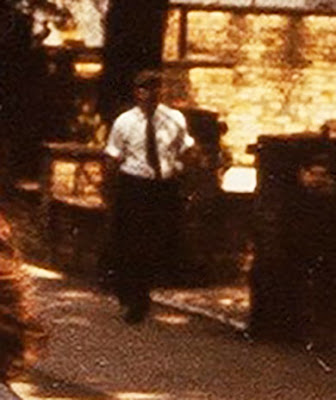 |
| Striding. |
Over on the left we get a clearer sight of the mysterious girl in the purple top, on the move this time, and two of the three decorators who appear on the actual cover, appear in this frame.
 |
| Girl on the move. |
 |
| Decorators. |
 |
| Photo 5 from a limited edition print. |
 |
| Photo 5, seemingly uncropped. |
Seagrove: "I am the guy on the right, in the bottom left-hand corner of the picture. It wasn’t unusual for me to be at Abbey Road. I had been there on numerous occasions. I used to see the Beatles having a cup of tea in the canteen. We would sometimes be at the next table and say a casual hello to them. On this day, we saw them all walking out the front door around about 10 or so, which was unusual in itself. You rarely saw them at that time of day. Curiosity got the better of us so we followed them. We stopped at the gate and they walked up the other end. We just stood there watching. The guy who was taking the photograph was waving to us to get out of the way but we decided to just stand our ground. We had no idea about the significance of the picture."
Close viewing shows another man, as yet unidentified, standing behind a car, close to the group of three. There is no sign of the mysterious girl in the purple top.This photo has been colour improved for use on the cover. The unaltered original has not been published, but above you can see an approximation I made, by placing it on top of the uncropped photo #6. To use it as an album cover, some cropping was needed to keep the Beatles in the center of the photo. For publication, the photo had some colour corrections, and also possibly the very blue sky was painted in.
 |
| This is photo #5 as album cover. |
This is how the original UK 1969 cover looked like, it was heavily saturated. The 1987 CD release had far duller colours, whereas the 2009 remastered CD version had a green hue.
The original photo may have been lost, and it's likely that the only original negatives remaining, are the outtake photos. Richard Heath: "Believe it or not but back in those days it was quite common to send an original to the blockmakers, ie for an album cover - even a Beatles one, and never see it again. Exactly that happened in this case. I started making prints for Iain in the mid 80's and I have never seen the original transparency, when I asked him about it he just said he never saw it again."
 |
| Photo 6 from a limited edition print. |
 |
| Photo 6. |
Other people appear, but are not engaged with the scene: a man dressed in black walks away from camera on the left pavement. On the right, by the police van, two people are looking away, while in the distance, on the left, passengers spill out of a number 159 bus.
Shortly after the shoot, McCartney studied the transparencies and chose the fifth one for the album cover. It was the only one when all four Beatles were walking in step.
Soulful Road
A seventh Iain Macmillan photo from that crossing appeared on an LP five years later, in 1974.
 |
| New York City - Soulful Road |
The cover shot on the LP, "Soulful Road" by New York City, looks very much like it could have been taken the same day. "Soulful Road" is the second and final studio album recorded by American male vocal quartet New York City, released in 1974 on the Chelsea label. To quote Popper, in the comments section of this blog post, "Exactly the same vantage point and the same vehicles parked down the side of the road. In the very first Beatles' shot, you can see a white or cream coloured car coming down the road towards the camera, on the right as we look (probably an Austin 1100). It proceeds to park up on the side of the road, as seen in the next shot - and it's there throughout the rest of the session. The cars behind it are unchanged too - two black ones close together then a little red sports car with a white roof. They are still there on the Soulful Road cover, unmoved, but the ones in front (eg the police van) have driven away. Same cars parked, different photo - so it's another one from a bit later in the day. The shadows are a bit longer".
And in the sleeve notes on the 2019 remixed anniversary boxed set of Abbey Road, it clearly says "In 1973, the vocal group New York City dropped in pictures of themselves on another of Iain Macmillan's pictures from The Beatles' session for their own record, Soulful Road." So, this photo was probably taken on the same day, but without anyone crossing the road. The members of New York City were photographed elsewhere and then superimposed on Macmillans shot of the empty crossing.
Here's the photographer, Iain Macmillan pictured with one of the photos he took. He had prints of the five outtake photos printed up, along with one from the photo he took for the back cover. These were limited edition prints, which was numbered and signed. In November 2014, a set of these six prints were sold for a staggering £180,000 by Bloomsbury Auctions.
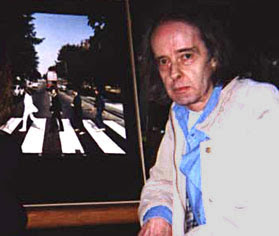 |
| Iain Macmillan pictured with photo 4. |
Part 2 - The "Mystery man"
In February 2008, news was that Florida resident Paul Cole, the man beside the police van had died, aged 93. But was he really that man? I don't think so, and here's why.
According to a couple of interviews he gave in 2004, Paul Cole was on the pavement while he was waiting for his wife, who was visiting a museum in Abbey Road. He was starting a conversation with the driver of the police van, and a bit later he realized that the police was there for a special occasion. When he looked over at the Beatles, he only recognized them as "A bunch of kooks, I called them, because they were rather radical-looking at that time. You didn't walk around in London barefoot".
 |
| Paul Cole's story |
1. There's a police van there.
2. Next to the police van there's a man standing.
3. One Beatles was not wearing shoes and socks.
So, he invented a story, putting himself in the picture. Well at least he got a laugh when news media all over the world reported about it. It's even in the Wikipedia entry of the album.
Here's a close-up from photo #2 of the "mystery man".
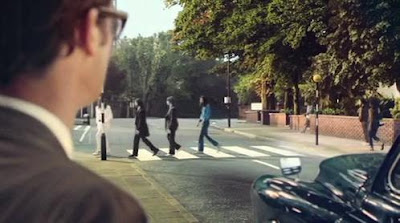 |
| Rockband commercial |
Clearly looking straight at The Beatles before the police van had turned up, here's a close-up of the "mystery man" as early as photo 1, while McCartney was still wearing his sandals:
Earlier references to the "Mystery man"
Over the years there are several people who have claimed to be the man on the Abbey Road cover. I have heard stories about people claiming to be or to know "the man on the cover" for as long as I have been a Beatles fan. One of them supposedly was a gay man who died in the seventies. Here's another, earlier claim:
Jo Poole: "At 21, I was a dedicated Beatles fan, and bought the 'Abbey Road' album the moment it was released. As soon as I saw the cover, I shouted, 'That's my brother, Tony.' He was 33, and was very distinctive at six feet four inches tall. Tony Staples was his name and he lived in Scott Ellis Gardens, near Abbey Road, and regularly saw the occasional Beatle, though catching a glimpse of all four Beatles together was rare, even in Abbey Road. He was on his way to work as an administrative secretary for the National Farmers Union on the Friday morning when that photo was taken. I used to travel regularly from my home in Gloucestershire to visit Tony in St. John's Wood, and I remember him pointing out Paul McCartney's house."
Of course, since Paul Cole was the first of the "mystery man" candidates who managed to get in the news during the internet age (2004), and because he was referred to as "the man on the Abbey Road cover" in an obituary that was widespread all over the internet (2008), AND because the job of research has been abandoned along with the proof reading job by the media at large, it has become almost impossible to google and find all those other, previous claims (from the pre-internet seventies) about the identity of the man. In 2004 and 2008, a news item such as this could "go viral". In the seventies, it would have been published in a small, amateur Beatles fanzine and read by the die-hard subscribers only.
Part 3 - Beatles and bystanders
The gang of three directly over McCartney's head seems to have been identified, too:
Mrs N. C. Seagrove: "It wasn't until years after the 'Abbey Road' LP was produced that my husband discovered he is on the album cover. Derek was 31, and working for the decorating firm Fassnidge, Son & Morris, based in Uxbridge, when the picture was taken. He's the one on the right of the three men in white overalls on the left-hand pavement. The other two are his work-mates, Alan Flanagan and Steve Millwood. They were doing a decorating job in Abbey Road studios and were coming back after a lunch break when the picture was taken. They hung around just to be nosey. Derek thought if it was used, he and his mates would be edited out."
The 2011 exhibition "Beatles and bystanders" was a small one, with just the six Macmillan photos. So to expand the theme a bit, the exhibition focused on the bystanders that close scrutiny of the blown up original photos reveal.
 |
| From photo #1 with the background lightened. |
Part 4 - Candid snapshots
Linda McCartney and Mal Evans were around for the photo shoot and took a lot of pictures themselves during the proceedings, many of which are still unpublished. But some are available.
Here's a bird's eye view of the Abbey Road crossing as it is today, with the three photo locations indicated by numbers. 1 marks the stairs outside Abbey Road studios, The Beatles are walking from 2 to 3 on Macmillan's photos 1, 3 and 5 and from 3 to 2 on photos 2, 4 and 6.
Location 1
First some shots from the Abbey Road stairs. We don't know if these are taken before or after the photo session, but before is more likely - waiting for Macmillan to rig his stepladder - or for the policeman to arrive to hold up the traffic. After the session, they probably didn't want to hang out outside the studio.
 |
| This is a brighter version of the same photo that occupied this space earlier |
 |
| Still photo from the George Harrison documentary "Living in the Material World" |
 |
| Brighter than the others |
 |
| Taken by Mal |
 |
| This is the photo Linda gave the title "four strangers" |
 |
| Linda's hand bag. |
 |
| Alan |
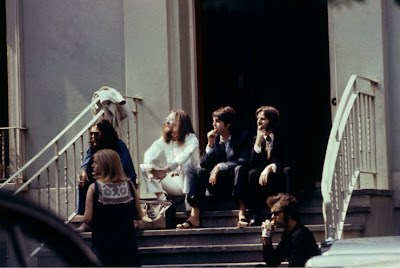 |
| With Linda and Alan the driver. |
 |
| Another of Linda's photos |
 |
| Also one of Linda's |
 |
| George completes this selection of Linda's individual portraits |
 | |
| Four different individual shots |
The following are photos where The Beatles are standing around location 2.
 |
| Same as above, but colour corrected by Eric Bourgouin, who felt that the original was too saturated. |
 |
| Paul has his cigarette. |
 |
| Linda's photos. |
Ringo picks his nose... Paul has sandals on, so this is before photo 1.
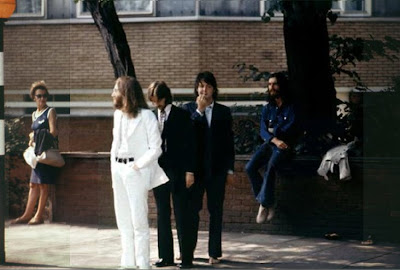 |
| Mal Evans photo - puzzled together from various versions of the photo. |
 |
| Same photo, taken from a transparency. |
 |
| Reversed, a narrowly cropped version of it was also used as a 1970 single cover in Japan. |
 |
| from Anthology |
 |
| Mal Evans' photo |

|
| Linda McCartney photo. |
 |
| Immediately before the cover shot. |
 |
| from Anthology |
Linda: From the Anthology book. Part of a bigger photo?
Location 3
The following are photos where The Beatles have crossed the street at least once, and are standing on the other side, waiting to go back.
 |
| Linda's photo? |
 |
| Modern day photo of the same location. |
 |
| Linda's photo. |
 |
| Linda again. |
 |
| Zoom |
 |
| Waiting for the traffic. |
 |
| Still waiting. |
 |
| still waiting... |
Part 6 - Iain Macmillan's back cover photo
 |
| The Abbey Road back cover photo. O and A in "ROAD" may have been repaired. |
In a blog post from 2010 where Mike Cockcroft talks about his dad, we found some information about the retouching of the back cover, and he has also given us some details by email. John Cockcroft (1934-2008) was an expert on retouching photos, and Mike says that he was the man responsible for the job that was done on the Abbey Road back cover photo - for use on the album cover.
The company he was a director of was called Colorcel, it was a professional photographic lab producing dye transfer prints and offering a retouching service, it was located in London at 52/54 Featherstone street, London EC1. John Cockcroft was a director and the head retoucher. It ran from the late 1950s through to the 70s. The clients where mainly professional photographers and ad agencies. Iain Macmillan was a client. and would have bought his film from them and had it processed there. Ringo was also a client and had his happy snaps processed and printed there (something that amused Cockcroft, as the lab was really for professional photographers and ad agencies who could afford the rates).
Iain Macmillan shot the front and back covers, Mike is not sure if his dad did anything on the front cover, it’s possible he removed some bystanders, but he doesn’t know for certain.
We don't think much was done to the front cover, the bystanders all seem to be there, and we believe that colour improvement, especially as far as the sky is concerned, is what mainly has taken place.
The intermediate mock-up of the album's back cover:
 |
| The back cover, with some preliminary mock-up text but no "BEATLES" sign yet. |
Although Kosh kept from adding the group's name to the front cover (and George Harrison sided with him about that), the "BEATLES" sign on the back cover was added.
"It was really a publicity photograph. It was a desperate time for EMI. Let It Be was supposed to come out… and was put back. Abbey Road all of a sudden was slotted in and they wanted an album cover on Wednesday — and it’s Tuesday. Iain Macmillan had his light box, and we had the loop and transparencies and we just chose one. Then I had to go, I had to really rush. But somehow or other the printer, which was Garrod & Lofthouse (...) really helped me put this thing together." John Kosh.
Although he is referring to Garrod & Lofthouse, who printed the album sleeves, the actual work may still have been undertaken by by John Cockcroft of Colorcel. Someone put the "BEATLES" sign into the picture and drew in the crack in the "S", and possibly repaired some of the letters in "ROAD". It might as well have been Colorcel.
A version of the Abbey Road album back cover with the "BEATLES" sign added, but without the text (song titles etc) and Apple logo exists and used to be here on the blog, courtesy of Recordmecca.com, but is now no longer available online.
In thet version, there was a white edge under and to the left of the "BEATLES" sign, this was blackened before the cover was regarded as finished. Four of the other original letters from the sign were salvaged during the demolition of Alexandra Road, and later glued together again and sold for £7000 in 2012.
From Macmillan's transparency, a dye transfer print was made using separation negatives, (you end up with a set of three pin registered matrixes, magenta,cyan and yellow, which are then individually placed on top of a print to transfer the 3 colours that make up the Dye Transfer).
The difference between a type c print and a dye print is that on the type c any retouching done would have to be with acrylic paint or gauche paint and an airbrush, and would sit on top of the print surface emulsion, crude and sometimes quite visible. On a dye you could use bleach to remove any part of the image all the way back to white and then use the same dyes that had produced the print to draw back in the missing area, the result in the hands of a master would be undetectable.
As an example, suppose you wanted to remove a person from a shot, you would bleach the area out till it went back to white, making sure you had a soft edge. So now you have a print with a white hole were the person was, what the retoucher would have to do is fill this hole with the surrounding detail. How? With a fine brush, dyes, and a lot of skill and patience, and on a dye if done right you would never know a person had been there, maybe five hours work, done today in 5 minutes in Photoshop.
Dye transfer was a new process at the time and allowed incredible image manipulation,photo composites and retouching, many of the techniques that are so easy to do now in photoshop, had to be done by hand, it required a high degree of artistry and craftsmanship. Here's a link to a video describing the process: daviddoubley.com.
 |
| Signs around London. This 2007 photo: Roger Stormo |
From these shots, a composite was created of the Beatles lettering and then combined and used to mask this area out on the master set of dye matrixes, so that when a new dye was made, the combined lettering would be part of the image. Whatever imperfections then existed (masking lines etc) would be bleached out, and the detail tickled back in with a fine brush using dyes mixed and matched by the artist to recreate missing detail. The infamous crack in the "s" was bleached back and then drawn in. If this was Cockcroft's input or a request from the art director, Mike doesn’t know, but it helped the lettering look real. The scene in the photo did have an original Abbey Road street sign, but replacing letters may have been applied to the damaged "O" and part of the "A" in ROAD on the original sign. These original letters seem to have fallen victims to that major crack in the wall.
The actual back cover photo was taken on the corner of Abbey Road and Alexandra Road, a road which is no more. Cockcroft talks about cracks being drawn in to make it look real, but the main crack is certainly real, as seen in this photo:
 |
| Early album cover tourists |
 |
| The "O" is clearly damaged in this photo, too. |
The girl in the blue dress
Every reference to her has her already in the place when the photo was taken. Sometimes she has been identified as Jane Asher, but we think that's just an uninformed rumour. After all, Paul and Linda had been married since March, and the scene in the Alexandra Road/Abbey Road junction where the back cover was photographed was half a mile away from the famous Abbey Road crossing.
Wikipedia: "After the shoot Iain went to find a road sign for use on the back cover. It was taken on the corner with Alexandra Road. During photographing the sign a girl in a blue dress walked through the shot. Iain was angry but later it was chosen as the back cover. The wall with the sign was demolished several years later."
Later in life, Macmillan have referred to the girl in the photo as a "happy accident".
 |
| A weird one: The text is in place, the Apple logo is correctly aligned, but no "BEATLES" sign. And this is for the USA edition, as observed by the catalog number SO 383 in the upper right corner. |
Part 7 - Advertising the album
 |
| Original poster ad. Sent us by Eric Bourgouin |
 |
| A large billboard on Sunset Strip, LA, 1969. Photographed by Robert Landau |
 |
| 2-page NME advertisement spread, sent us by Yan Friis |
Part 8 - Updates
Since this was posted, some photos have appeared,and some of the ones in the original post have been replaced by better versions of the same photo. Feel free to send me updates so I can keep improving this post!Improvements so far:
- The photo of The Beatles with several spectators taken from Macmillan's p.o.v. was sent to me by a reader. Inserted and updated with the same in higher resolution from Miss Tammy's site.
- A still photo of the four Beatles on the Abbey Road stairs has been captured from the recent trailer for the George Harrison documentary, "Living in the material world"
- Macmillan's photo 6 has been replaced with one that was bigger and better.
- The "Ringo joins in on the fun" photo replaced with a composite in better resolution.
- The Club Sandwich photo replaced by a bigger version.
- Macmillan's Photos 2, 3 and 4 replaced by better versions.
- Two alternate versions of Macmillan's Photo 1 removed.
- The Abbey Road album cover miniature replaced with a "greener" one.
- Added a map with locations numbered
- Arranged the post into sections
- Added some captions
- Replaced Macmillan's photo 6 again with a more colourful one
- Added Mal Evans to the storyline, details provided by Eric Bourgouin
- Added Paul McCartney's layout drawing
- Added a news story about Paul Cole
- Replaced the "mystery man" photo with a bigger one.
- "Ringo picks his nose" replaced by an improved version of the same photo
- Modern day photo showing streetlight pole relocation added.
- New Ringo & Paul photo by Linda McCartney added
- The brighter stairsteps photo is new
- The first John/Paul photo replaced by a brighter version (and without a caption)
- Solo John photo added near the end
- Four individual shots, from the Kenwood blog added.
- Linda's "Club Sandwich" photo replaced by a better version from Paul McCartney's facebook page.
- Paul McCartney's website featured 13 of Linda's photos, several of which were previously unpublished. I made use of them to insert where appropriate.
- The "Ringo joins in on the fun" photo replaced by one in a higher resolution.
- Section 6 about the back cover added.
- Section 7 about advertisement added.
- Macmillan's photo 4 replaced again, the previous incarnation was a composite of two versions.
- Macmillan's photo 6 replaced again with a better version.
- Macmillan's photo 1 replaced again with a better version.
- The Abbey Road cover (photo 5) edited to reveal how much it has been cropped.
- "A weird one" back cover photo added.
- Comments by Rand Bruckner about the buses added.
- Information from Mike Cockcroft about his father John Cockcroft of Colorcel doing some retouching of the back cover added.
- Added a "girl in the blue dress" headline
- Rearranged the candid snapshots, placing them in numerical order.
- Added photos of limited edition prints of Macmillan's photos 1-6.
- Added more close-up photos of the "mystery man".
- Replaced Macmillans photos 1-4 and 6 once again, with better versions.
- Added Guy White's descriptions of bystanders in each of the Macmillan shots.
- Added Kevin Harrington's story about the rehearsal for the photo shoot.
- Replaced photo captioned "Alan" with a better version from George Harrison's Twitter account.
- Made the article a Page, as opposed to a Post
- Filled in some information about Alexandra Road and the housing estate that replaced it.
- Included image and story of HMV boxed set Abbey Road.
- Included info about Macmillan's camera and the prints sold by Bloomsbury Auctions.
- Added several close-ups of bystanders
- Inserted Richard Heath's comments about the date, shutterspeed and the disappearing original.
- Added weather details etc
- Added Eric Bourgoin's desaturated photo, probably closer to the natural light and saturation.
- Added a new transparency version of one of Mal's photos, and a Japanese single cover with the same photo.
- Added that day's page in Mal's diary
- quotes from Derek Seagrove and Iain Macmillan added from a 2019 article by Ken McNab in Daily Record.
- new image taken from presentation video for 2019 Abbey Road remixed album.
- test photo of Kevin Harrington and Steve Brendell added.
- Soulful Road photo and story added
Photo credits:
© 1969 Iain Macmillan (the six variations of the Abbey Road front cover and the back cover photo)
© 1969 Linda McCartney (all other photos taken around the cover photo session, except)
© 1969 Mal Evans (photos taken from Mal's point of view and one from the Abbey Road steps with Linda McCartney in view).




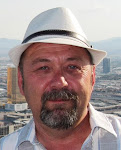












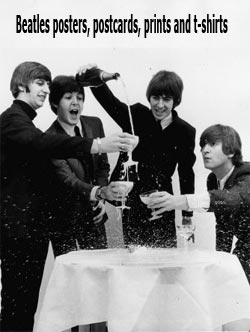




















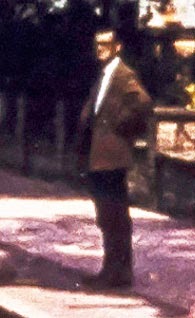
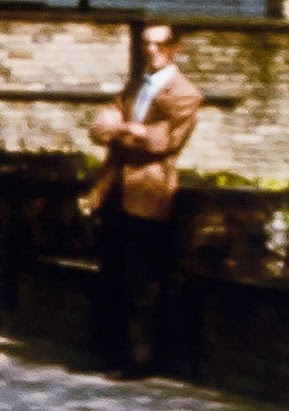







17 comments:
I purchased a set of the 5 front photo outtakes that weren't used for the cover from Ian Macmillan who made them from the original negatives. He signed one of them. I actually called him and spoke with him. This was in the mid 80's. they were approximately 7 inches square. I should have purchased the album size photos as well as a rear photo in hindsite. Couldn't afford those. Actually, I could have. I just didn't. Oh well, cannot go back in time. Just had the set reframed museum quality. A proud treasure of mine. I almost put them up for sale at Sotheby's this year. Glad I changed my mind.
Excellent and informative. Thanks Roger.
You are a master of information. Thanks for all of your hard work.
Hi, I have info that I think you need on your blog.Could you send me an address where I can send it to. Regards Richard Heath
My name is Richard and I was Iain Macmillan's printer for nearly 25 years, all of them Abbey Road shots.I have info I would like to put on your site. Could you give me an email address, or something similar, so I can send you this to add to you site. Which is great by the way.
Hi Richard, sorry about the late reply.
email: roger.stormo@gmail.com
I note that the "intermediate mock-up of the album's back cover" picture shows that song we have known since 1969 as simply "The End" was once titled, or mistitled, "In The End." Maybe only a proofreader would spot that right away!
I sadly note that the picture of that guy with billboard Paul's head is no longer appearing on that story link, drat!
I like your blog…….here is my quick blog on the Beatles
Zulu Delta
https://zuludelta45.net/2018/08/26/abbey-road/
Fantastic Article...Thanks!!
Hi Roger -
Outstandingly researched article - thanks! Poring over the photos (as I have been), I suddenly see how one might calculate the approximate time elapsed between shot 1 and shot 6.
First you need to compare the uncropped versions of those two photos you have posted.
In each one, look at the shadow being cast by the street lamppost on the right of frame - it’s just above the end of the zebra crossing. See how the shadow is slightly closer to the edge of the kerb in shot 6 than it is in shot 1? This is obviously caused by movement of the sun.
All we need now is somebody to stand there with an upright broom handle casting the same shadow in the same place, and measure the time it takes for the shadow to shift position by the same amount.
Today’s the day to do it - exactly 50 years on!
Adrian
🙄 Er, slight correction, Roger - I meant shadow is closer to kerb in shot 1 than it is in shot 6. Good thing I don’t work in air traffic control.
The cover shot on the LP, Soulful Road by New York City, is definitely another from the same day. Exactly the same vantage point and the same vehicles parked down the side of the road. In the very first Beatles' shot, you can see a white or cream coloured car coming down the road towards the camera, on the right as we look (probably an Austin 1100). It proceeds to park up on the side of the road, as seen in the next shot - and it's there throughout the rest of the session. The cars behind it are unchanged too - two black ones close together then a little red sports car with a white roof. They are still there on the Soulful Road cover, unmoved, but the ones in front (eg the police van) have driven away. Same cars parked, different photo - so it's another one from a bit later in the day. The shadows are a bit longer. I really think this is worth a mention.
If you read the sleeve notes on the new Abbey Road box set, you will read, "In 1973, the vocal group New York City dropped in pictures of themselves on another of Iain Macmillan's pictures from The Beatles' session for their own record, Soulful Road."
I'm telling you - that photo was taken the same day, and is now confirmed as being snapped by MacMillan. It's another, previously unacknowledged photo from the same day.
Thanks Popper - I have inserted the story and photo into the blog post!
"One of them supposedly was a gay man who died in the seventies." This comment adds nothing of value to the article and should be removed.
An excellent site and article on Abbey Road, l also have a fascination for the album artwork and despite its simplicity it has endless questions and answers to found. It's was mentioned some where on here about the back cover and the chap called Cockcroft who worked on the additions and retouching and he claimed to have added the girl in the blue dress but it obvious this was a part of the original Macmillan photo and unfair enhances the back cover for me. I think probably he did work on the girl but probably saturated the floors more so it appears bluer than the original image, this is better for the printing process and as we can see by the original Garrod and Lofthouse album cover it is definitely different in contrast and colour hues to the original slide. I set a blog up many years ago too called York Beatles Appreciation Society, its a bit out of date but I really need to finish off some of the pages I started, have a geek if you fancy, well keep up the good work ,it's takes a lot of time and focus.. I know! Cheers Chris.
http://yorkbeatlesappreciationsociety.blogspot.com
Absolutely. His age shouldn't have anything to do with it.
Post a Comment